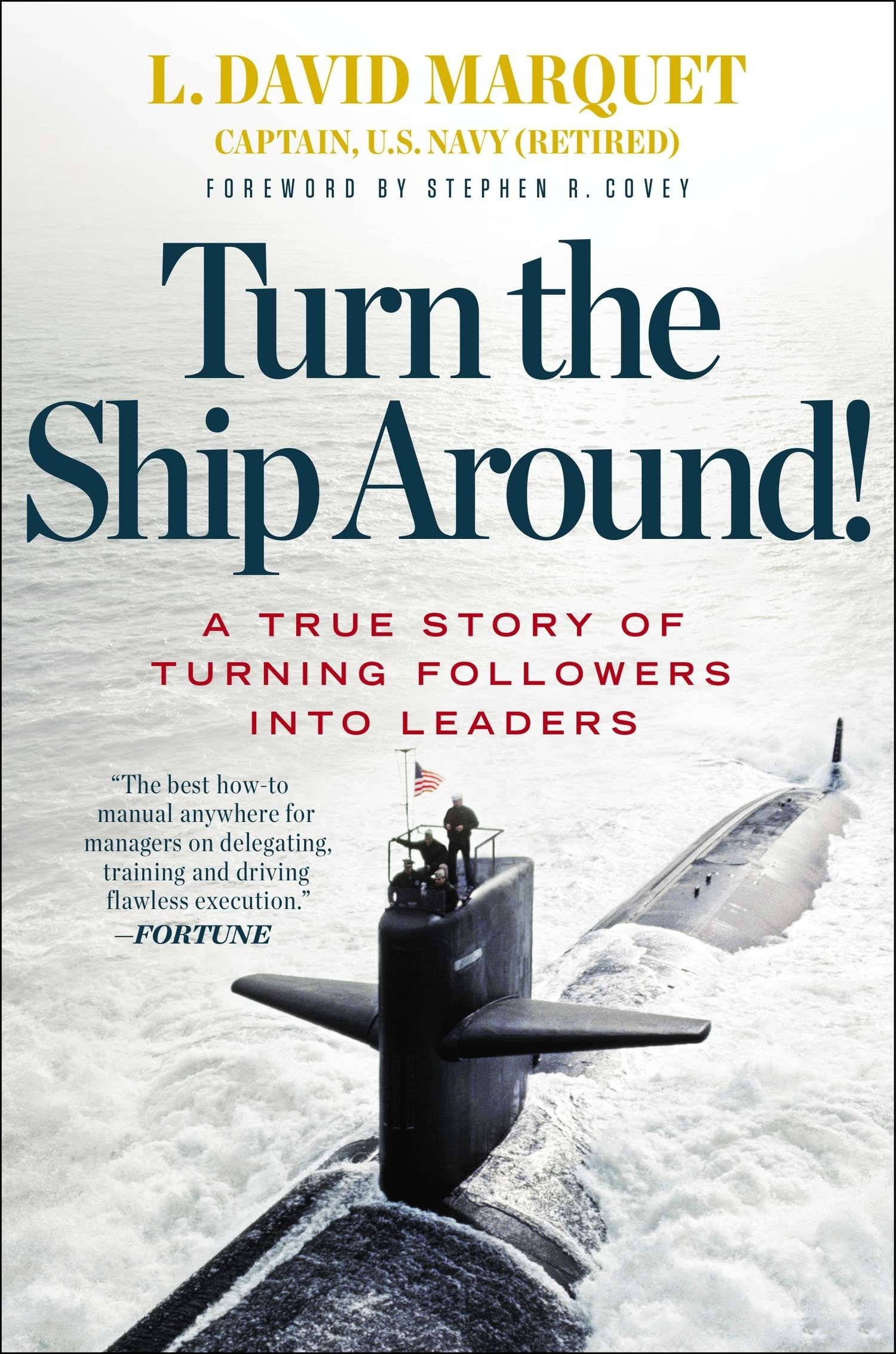I recently finished the book, Turn the Ship Around by David Marquet. The author was appointed captain of the submarine USS Santa Fe. At the time, it was performing at the bottom of the fleet. He tells the story of how he turned the submarine performance around with the leadership style he developed. The leadership methods he learned also apply to building and turning around companies. Startup founders in particular can benefit by using these principles from the beginning rather than trying to change the culture later on.
The main premise I got from the book is that leaders should treat those they lead as other leaders rather than followers. He calls it the leader-leader model rather than the traditional leader-follower model.
Here are four ways to implement a leader-leader model in our organizations:
1. Use empowering language
Words have a strong impact on our culture. Every organization develops unique methods of communication, such as acronyms and common phrases.
The author gives examples of phrases that indicate disempowerment (said by those who are led to their leader), such as “I would like to…” or “could we…” or “what should I do about…” These are passive phrases that require the leader to dictate, or at least contribute to, the solution.
On the other hand, empowered phrases include, “I intend to…” or “we will…” These types of phrases encourage people to think and decide for themselves. If the action requires the leader’s permission, the leader can simply reply, “very well,” or ask questions if clarification is required.
We can empower those we lead to act and not be acted upon, and that empowerment can start with the words we use.
2. Have a servant mindset
Leaders should consider themselves servants to those they lead. As Jesus said in Matthew 23:11, "But he that is greatest among you shall be your servant."
My job as a leader is to make it easier for those I lead to do their jobs. I can help solve problems, provide coaching, and give advice from my training and experience.
3. Specify goals, not methods
I am guilty of not following this principle. I am system-oriented, and as a leader I think it’s my job to specify the step-by-step processes for others to follow. Sometimes I think I’m the best qualified to know the best way to do things.
Periodically I'm reminded that I’m not usually the best qualified to specify the how. As a leader, I do need to work with other leaders to define and communicate priorities and goals. However, I need to let those I lead develop the methods to achieve those goals.
A few years ago I was given responsibility for the operations of a factory. The team was struggling to load outgoing trucks within a reasonable time, and they often made mistakes by loading the wrong products. As a new leader, I thought I could save the day by dictating the methods for reaching the goal of loading quickly and accurately.
I worked out of a different city, but I would spent at least a full week every month for a few months on the ground, working side-by-side with the team, showing them what I thought was the best way to reach the goal.
Before leaving, I would document the process and encourage them to follow it. Invariably, the process would break down after I left, and I would go back the next month and try to fix it again. Frustrated, I couldn’t figure out why they couldn’t simply follow the process.
After a few months I gave up. I simply told them I didn’t care how they did it, but we needed trucks loaded quickly and accurately. Miraculously, within a few weeks trucks were being loaded quickly, and mistakes were rare. Several years later, I still oversee that factory, and I have no idea what the system is for loading trucks.
4. Don't be missed after you depart
Why do we want to lead? So we can be in a position of power? So we can have a secure job? So we can make more money?
Leaders who lead followers make sure their organization and people can’t function without them. If the leader leaves, the organize is worse off, at least until another leader steps in.
On the contrary, we should lead so we can leave our organization and those around us better than we found them.
It’s hard to think that way. As a leader, I like to think of myself as indispensable. They can’t do it without me! However, this attitude is self-serving.
By following the leader-leader model, we can build an organization full of leaders. Leaders who make good decisions when left on their own. Leaders who take good care of the customer when the supervisor isn’t watching. Leaders who identify and solve problems without being directed. Leaders who continue to build a great organization after you are gone.
Question: How do you build a leader-leader culture?

